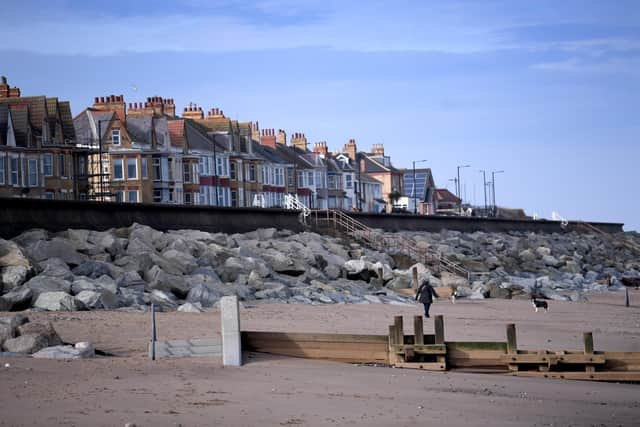Will the Holderness nuclear waste plan deliver opportunities for the next generation? - David Behrens
I didn’t mean it literally. But actually it’s pretty much what will happen if they go ahead and turn part of East Yorkshire’s fast-eroding Holderness coastline into Britain’s first and only underground storage facility for radioactive rubbish.
The complete absence of consultation before the news went public was the reason it was such a shock. Not even our town council had been told. There was less warning than you’d get for an actual nuclear strike.
Advertisement
Hide AdAdvertisement
Hide AdSo it’s fair to say that communication isn’t the strong suit of Nuclear Waste Services, the quasi-governmental agency charged with finding a more permanent home for all the contaminated gunk currently stored above ground. They’re like a dog walker with a full poop bag and nowhere to put it.


The words ‘nuclear’ and ‘waste’ are guaranteed to make people suspicious. A bit like ‘post’ and ‘office’. Besides, no one trusts any government to do the wise thing; they will only ever pick the most expedient solution. That is especially true when policy is delegated to arm’s-length, over-budgeted agencies for whom exercises like this are a gravy train ridden by costly ‘consultants’.
This was borne out 10 years ago when the Nuclear Decommissioning Agency, parent organisation of Nuclear Waste Services, was revealed to be paying some of the highest salaries in the public sector, with lavish bonuses and allowances on top.
So it’s not surprising that Holderness is wary, not just about the long-term health consequences of hosting a nuclear graveyard but also the fear that the 20 years it will take to reach a decision will blight the area by devaluing property prices.
Advertisement
Hide AdAdvertisement
Hide AdProtest groups have sprung up here and in three more areas under consideration, as others have done before – for this is not a new process. The search for a site hundreds of metres underground began during the Blair years and two previous initiatives have failed to find one. Only one in the world is anywhere near ready and it’s in Finland, where they have far more open space than we do in Britain.
The central issue, though, is whether this is a threat or an opportunity. Will the children of today find economic salvation in the hundreds of jobs a geological disposal facility would bring? And far from blighting the surrounding area, could it create new property hotspots for workers and their families drawn here to pursue their careers?
The transformation may bring other benefits, too, because Nuclear Waste Services is dangling the carrot of reopening the pre-Beeching railway from Hull to bring canisters of waste to their new facility. The line’s closure is still blamed for the economic malaise of towns like Withernsea, the little seaside resort at the centre of the exploration area – and a replacement would be a once-in-a lifetime chance for restitution.
Having said that, this is a country that can’t manage to connect its biggest cities by high speed rail; can we trust a future government to sign off on a branch line to nowhere?
Advertisement
Hide AdAdvertisement
Hide AdBut if the need for investment is beyond rational debate, the environmental argument is more nuanced. Holderness is an unspoilt wilderness and its isolation is what gives the area its unique charm. Many locals are keen to hang on to that and so am I – but I’m in no position to deny the next generation their chance of a more prosperous future. I’ll be dead and buried – beneath a nuclear disposal facility or not – before anyone makes up their mind.
So while our local MP, the climate minister Graham Stuart, is right to press for a referendum, the result will mean little unless it’s weighted towards voters young enough to reap the harvest or suffer the consequences of their decision. That’s a lesson we should have learned after the last referendum.
Others we may learn from are the people of Bridgwater in Somerset, whose economy was transformed by the first Hinkley Point nuclear power station in the 1960s. They’re now building a third there, and it is to the local employment market what the coal mines once were to parts of Yorkshire.
And while the perceived health risk remains, there’s probably a greater day-to-day danger from the crud Yorkshire Water is dumping on our coastline right now. They’re not even bothering to bury that stuff.
Ultimately it boils down to this one question: can the nuclear fallout from the last generation become a windfall for the next?
Comment Guidelines
National World encourages reader discussion on our stories. User feedback, insights and back-and-forth exchanges add a rich layer of context to reporting. Please review our Community Guidelines before commenting.